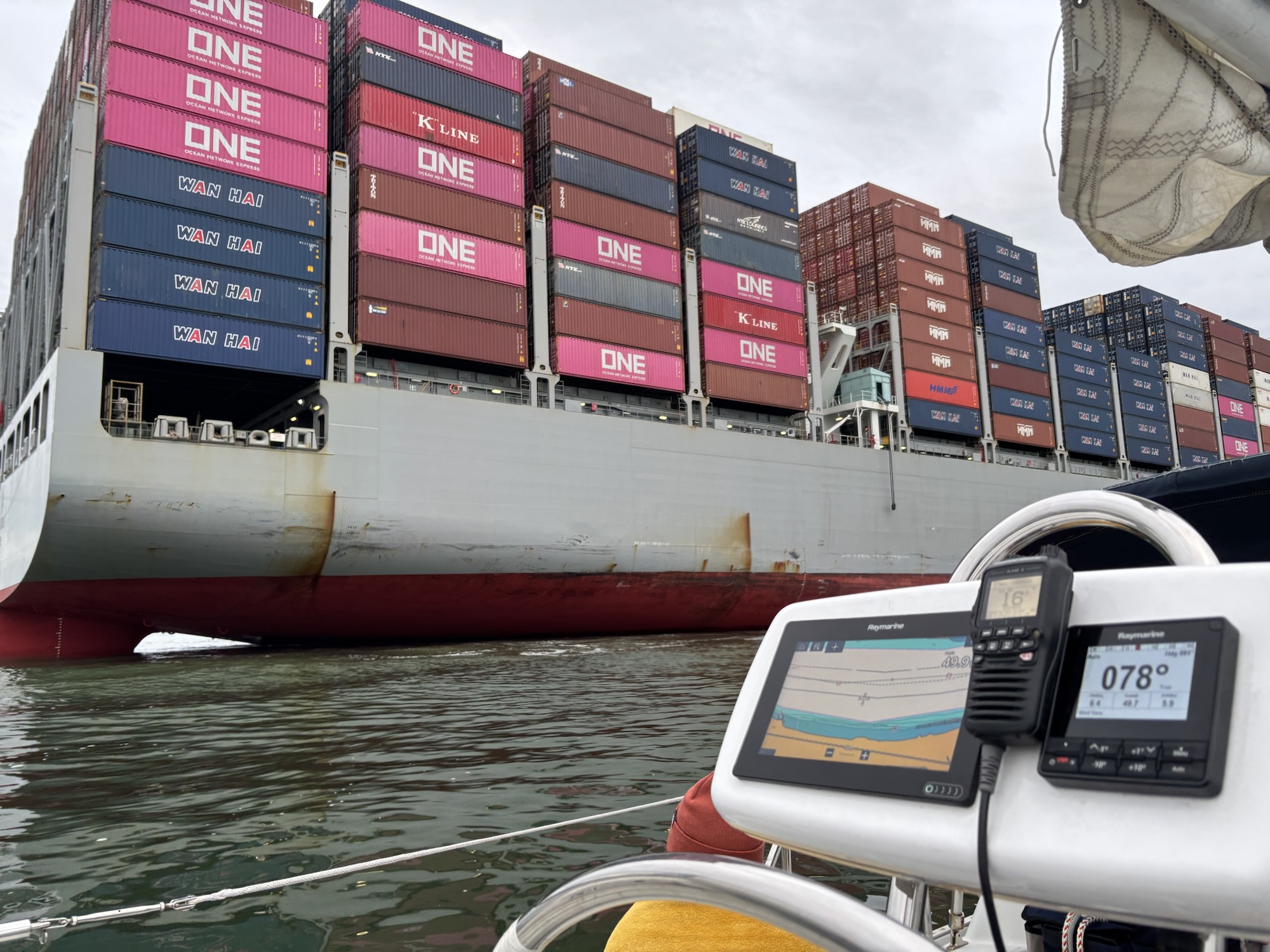Date: November 14, 2025
Crew: Jeremyn + Becca
Time Underway: ~6 hours
Route: Grand Marina → Oakland Estuary → Yerba Buena Island → SF Bay → return
1. Departure & Systems Check
We cast off from Grand Marina at 11:15 and performed a slow-speed test down the Oakland Estuary. Engine warmed up normally, though the tachometer behaved inconsistently—initially dead, later jumping to an unrealistically high reading above 2500 RPM. Based on boat speed (5–6 knots), the true engine RPM was likely much lower. Throttle and shift cables were functional but stiff. Steering and autopilot powered up as expected.
2. Transit Down the Estuary
We motored at about 3 knots to evaluate vibration, prop wash, helm response, and handling in close quarters. It took about one hour to reach the mouth of the estuary due to slow motoring and outgoing traffic. Commercial activity was moderate, with tugs and freighters transiting the channel.
3. Under Sail — Rounding Yerba Buena Island
Once positioned east of Yerba Buena Island, the breeze filled. We raised the main, then the jib, and headed northwest toward the Golden Gate. Boat balance felt predictable, and the updated Raymarine instruments worked well. We sailed until roughly 14:30 before turning back to ensure we were tied up before rain and sunset.
4. Return Toward Bay Bridge — Traffic Avoidance
On the downwind run toward the Bay Bridge, a large tanker with two tugs made rapid progress behind us. Their speed difference in deep water was greater than expected. We powered up the engine, dropped sail early, and cleared the channel. This reinforced the importance of monitoring VHF CH 13 for commercial traffic near restricted-maneuverability vessels.
5. Autopilot Exercise
Once clear, we tested the wheel-mounted autopilot. Initial “No Data” errors resolved once underway on power, and the system held course adequately. The heading sensor will need calibration for consistent response.
6. Approach and Docking
We reached the Grand Marina fairway around 17:00, just before dark. Approach was controlled: slow entry at idle, neutral coasting, and gentle helm inputs. Docking was successful, but stepping off the stern allowed the bow to drift toward a piling. Quick correction prevented contact. A pre-rigged midship spring line will simplify future single-handed arrivals. After securing lines and fenders, we noticed the flag halyard had been left uncleated, but no damage occurred.
7. Condition Notes & Action Items
• Tachometer reading unreliable; inspect alternator excitation wiring and grounding.
• Throttle and shift cables remain stiff; replacement planned.
• Autopilot requires calibration.
• Monitor VHF CH 13/14 near the Bay Bridge and YBI.
• Rig a midship spring line before entering the slip.
• Verify halyards and topping lifts before securing the boat for the night.
Summary
This first full outing under my command provided a solid shakedown of the Ericson 32-200. Despite a few learning moments typical of a new boat, the vessel performed well. The engine ran smoothly, the sails handled predictably, and we returned safely before dark and weather. A successful initial voyage and a strong starting point for future improvements and more ambitious sailing plans.
